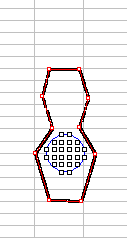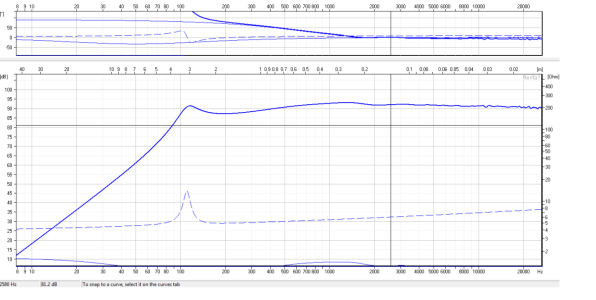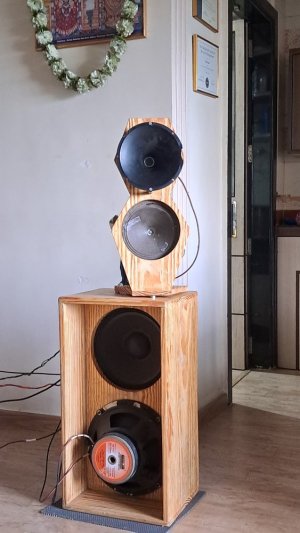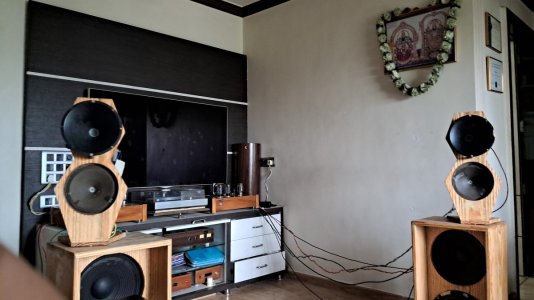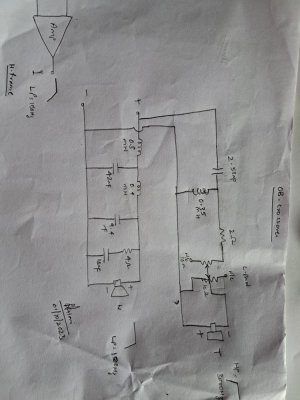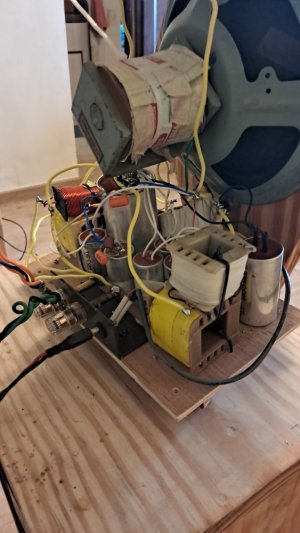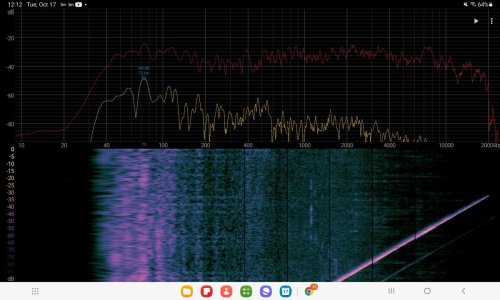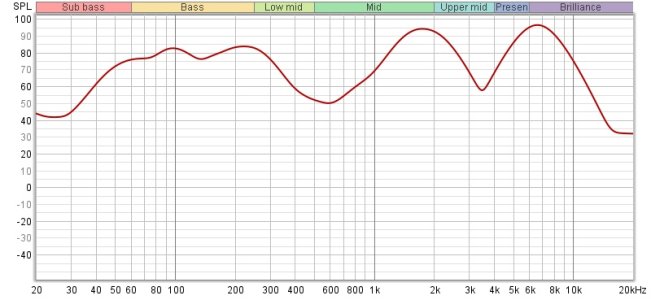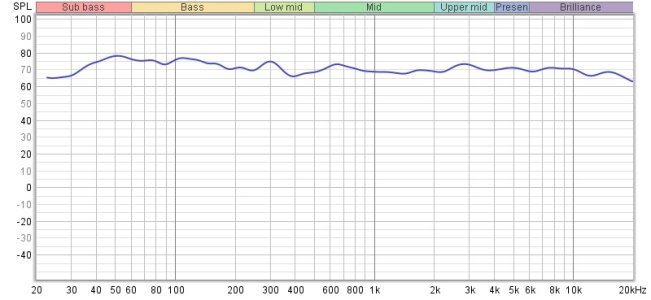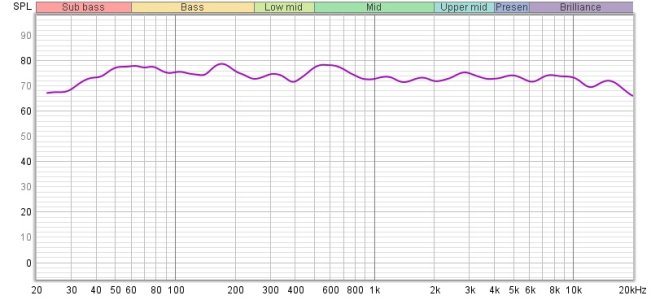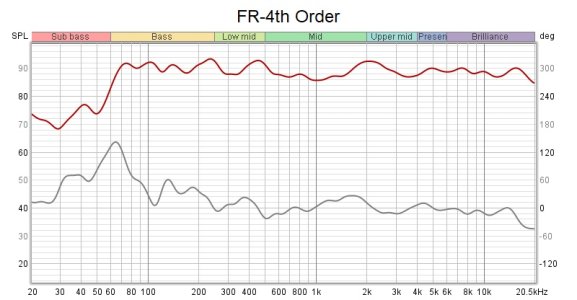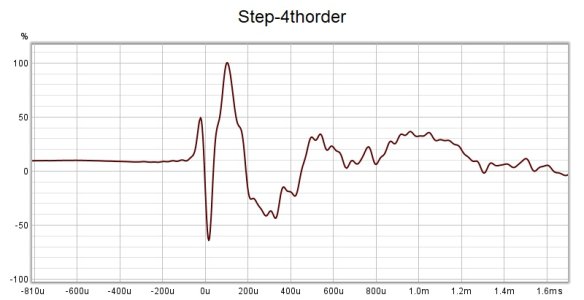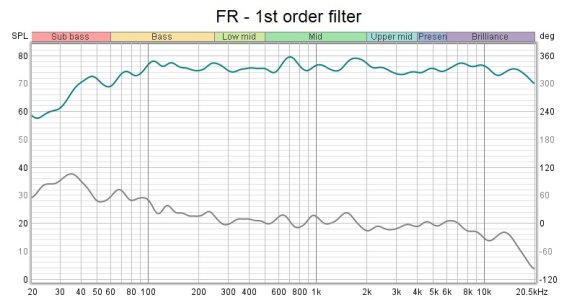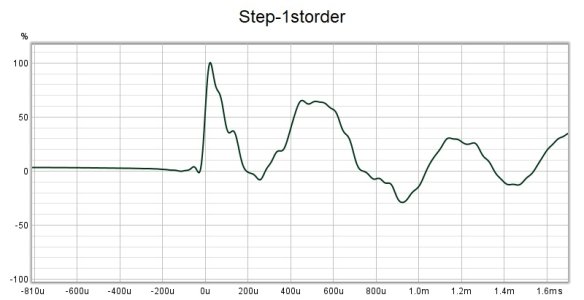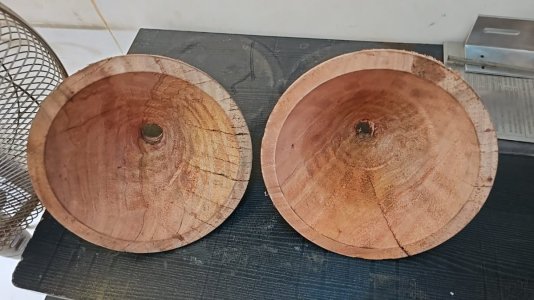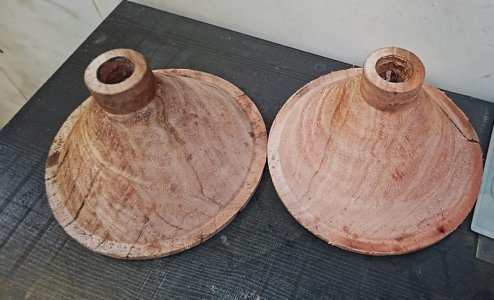After using my current open baffle for almost 6 years, I am now planning a new OB project venture for my own use. The current baffle had some issues with size w.r.t bass performance and also visually blocks my TV for folks to watch due to their 14.5 x 50 inch baffle in my small living room. Folks at home have to move the baffle aside to watch TV which was not comfortable for me on a daily basis. This new design will need to address this issue if it has to have a WAF and DAF ( Daughter).
Some designs came up to my mind like having a dual push-pull type H- frame subwoofer that can be crossed below 150hz and the OB mids taking over the rest of the bandwidth. As the OB needs to handle only beyond 150Hz ( which is my planned -6dB point), they can roll-off from 300Hz. The baffle need not be designed for low end duty and can have a narrow profile. I shall contine using the same drivers as I don't think anything wrong with them. Listing them here once again,
1. Cleveland Audio 12" Alnico woofer , reconed with Jupiter paper and Aluminium Vc former
2. Ahuja 12" ferrite woofer, again reconed with Jupiter paper and Audiotone VC
3. Sachenwerk 8" field coil driver
4. JBL Selenium CD
Below is the final design idea.
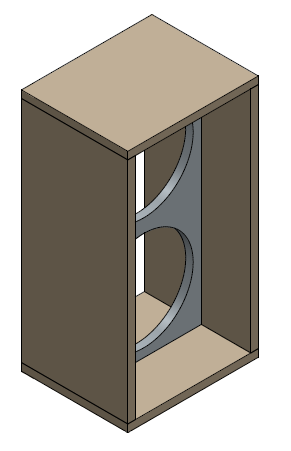
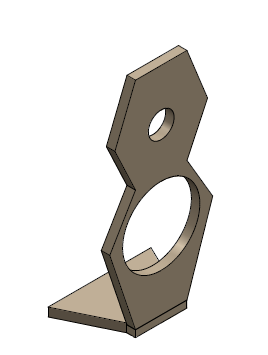
BTW, this design would not have seen light of the day without the help of FM @sadik who was generous enough for doing all the Autocad diagrams and answering all my queries. for that. I have sourced Pinewood for this project and there are mixed opinions about this in the internet. I would like to read less about the messaging that are penned about this wood and would go ahead building with this wood and discover for myself abouts it's pros and cons. Generalization in audio have never worked for me as each project is different imo. The current status about this project is today the wood is been cut at a CNC routing workshop and delivery is expected around Tuesday next week. Shall update this thread with further details. Stay tuned.
for that. I have sourced Pinewood for this project and there are mixed opinions about this in the internet. I would like to read less about the messaging that are penned about this wood and would go ahead building with this wood and discover for myself abouts it's pros and cons. Generalization in audio have never worked for me as each project is different imo. The current status about this project is today the wood is been cut at a CNC routing workshop and delivery is expected around Tuesday next week. Shall update this thread with further details. Stay tuned.
Below is the simulated response for the narrow baffle with the field coil driver,
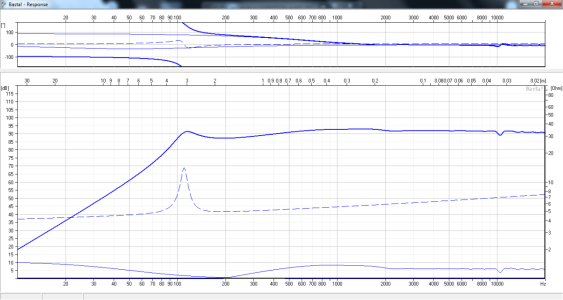
Thanks for looking.
Some designs came up to my mind like having a dual push-pull type H- frame subwoofer that can be crossed below 150hz and the OB mids taking over the rest of the bandwidth. As the OB needs to handle only beyond 150Hz ( which is my planned -6dB point), they can roll-off from 300Hz. The baffle need not be designed for low end duty and can have a narrow profile. I shall contine using the same drivers as I don't think anything wrong with them. Listing them here once again,
1. Cleveland Audio 12" Alnico woofer , reconed with Jupiter paper and Aluminium Vc former
2. Ahuja 12" ferrite woofer, again reconed with Jupiter paper and Audiotone VC
3. Sachenwerk 8" field coil driver
4. JBL Selenium CD
Below is the final design idea.


BTW, this design would not have seen light of the day without the help of FM @sadik who was generous enough for doing all the Autocad diagrams and answering all my queries.
Below is the simulated response for the narrow baffle with the field coil driver,

Thanks for looking.
Last edited:


